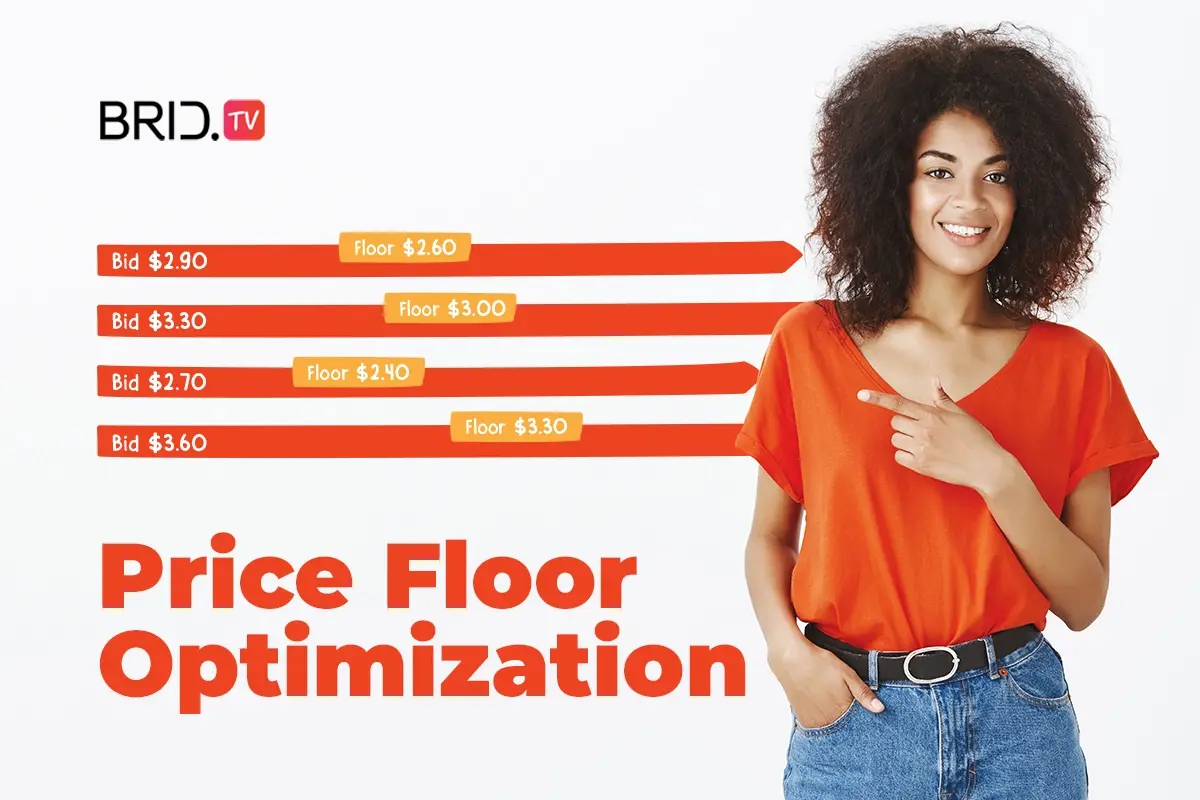There are many different factors that play into a successful monetization strategy, with price floor optimization being one of the most important ones. Still, as crucial as it is to set up the best price floors for your inventory, this is no easy task. Luckily, with TargetVideo’s dynamic Prebid price floor optimizer, getting higher RPMs for your impressions is only a couple of clicks away. Relying on advanced ad tech, detailed data analysis, and complex algorithms is a surefire way to more than double your ad revenue.
What Is a Price Floor in Programmatic Advertising?
A price floor, sometimes also referred to as a floor price, is the lowest CPM for which an ad can be served. This amount is determined by the publisher selling the ad space. For instance, if the floor price for a video ad is set at $2.00 CPM, only those advertisers who are willing to pay $2.00 or more per thousand impressions can purchase that ad space.

The Importance of Price Floor Optimization for Publishers
At first glance, price floors may seem like just another one of the many factors that play into a publisher’s ad monetization strategy. However, they can have a major impact on your ad yield.
Poorly set price floors can cut your revenue in half, if not more. Too high a floor will cause many SSPs to return no bids, which will make your ad fill rates drop. On the other hand, a low floor will allow for your inventory to be sold cheaply. For this reason, proper price floor optimization is one of the most important steps in ad stack management.
The Complexities of Prebid Price Floor Optimization
While setting the right price floor for your inventory is important, it is also quite a complex process. Most Prebid SSPs have their own analytics, so in order to calculate the best price floors, publishers need to consider the performance of each SSP that participates in their header bidding auctions. Things get even more complicated if the publisher uses multiple players or configurations.
Because of this, many publishers opt to pay for third-party analytic aggregation services. However, with TargetVideo, publishers also get access to already aggregated analytics, along with header bidding analytics, which makes tracking the performance of auctions much easier.
Track auction performance in real time across your entire header bidding stack.
Explore Analytics SuiteHow to Determine Price Floors for Your Inventory Manually
Manual price floor optimization is by no means an easy process, and it takes a lot of A/B testing. Here are some things to keep in mind when tackling this task:
- Consider the Crucial Factors — How much you can earn from ads depends on a number of factors, including average CPMs for the ad formats you have, the amount of traffic your website or app receives, the type of your audience, and so on.
- Check out Publishers Similar to You — If you’re just starting out, the best way to figure out your starting price floor is to check out publishers in the same niche as you, ideally in the same location and with similar traffic.
- Set up the Initial Price Floor — Once you’ve considered all the important factors, it’s time to set up the initial price floor for your ad inventory. However, the work doesn’t end here.
- Track and Adjust — Over the next period, it is important to closely track the performance of your auctions and adjust floors accordingly. If your ad fill rate is low, your price floor is likely too high. On the other hand, if you occasionally get significantly higher CPMs than your floor, you have some leeway to increase the cutoff amount.
Use a Dynamic Price Floor Optimizer
Manual price floor optimization is a complex, ongoing task. Luckily, ad tech has seen great advances recently, and one of those includes automatic price floor management. The TargetVideo Prebid price floor optimizer uses advanced algorithms and analyzes historical and real-time data to dynamically set price floors for each ad impression.
Thanks to the automation of the process, the optimizer is able to carry out tasks in real time, adjusting for each subsequent auction. In this way, it saves publishers a lot of valuable time and resources, in addition to bringing in higher RPMs with the optimal floor setup. In fact, some of our partners have seen their ad revenues more than double just several days after activating the price floor optimizer.
How Does an Automatic Price Floor Optimizer Work?
Although it is important to highlight that the price floor optimizer is bringing in fast and reliable results, it is just as crucial to understand how it works. The process consists of several basic steps:
- Step 1: Data Gathering and Analysis — First, the optimizer gathers SSP and ad performance data across our network and analyzes it.
- Step 2: Initial Price Floor Setup — Using the analyzed data, the optimizer determines the best starting price for each piece of your ad inventory.
- Step 3: Dynamic Adjustments — After the initial setup, the optimizer keeps track of your ad calls and adjusts the floors in real time to maintain the highest RPM.
Get the Best RPMs for Your Inventory With TargetVideo’s Dynamic Floor Optimizer
The dynamic price floor optimizer is part of TargetVideo’s Yield Optimization Engine, and it is available to all of the platform’s publishers who are using Prebid. If you’re not a TargetVideo partner yet, sign up today to get access to a comprehensive OVP, a lightweight, fully-customizable HTML5 player, quality ad demand, and an array of yield management tools for the best monetization results.

